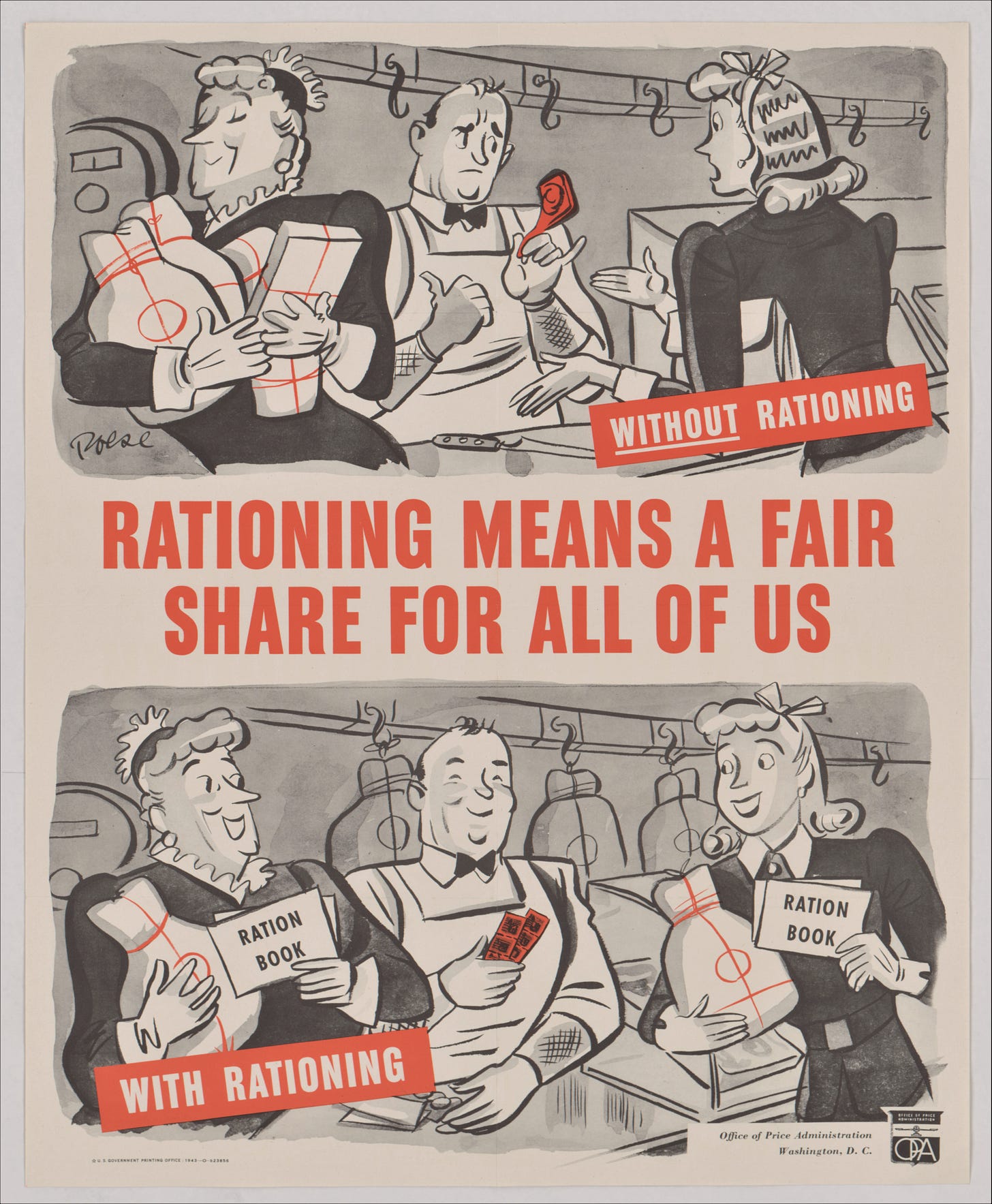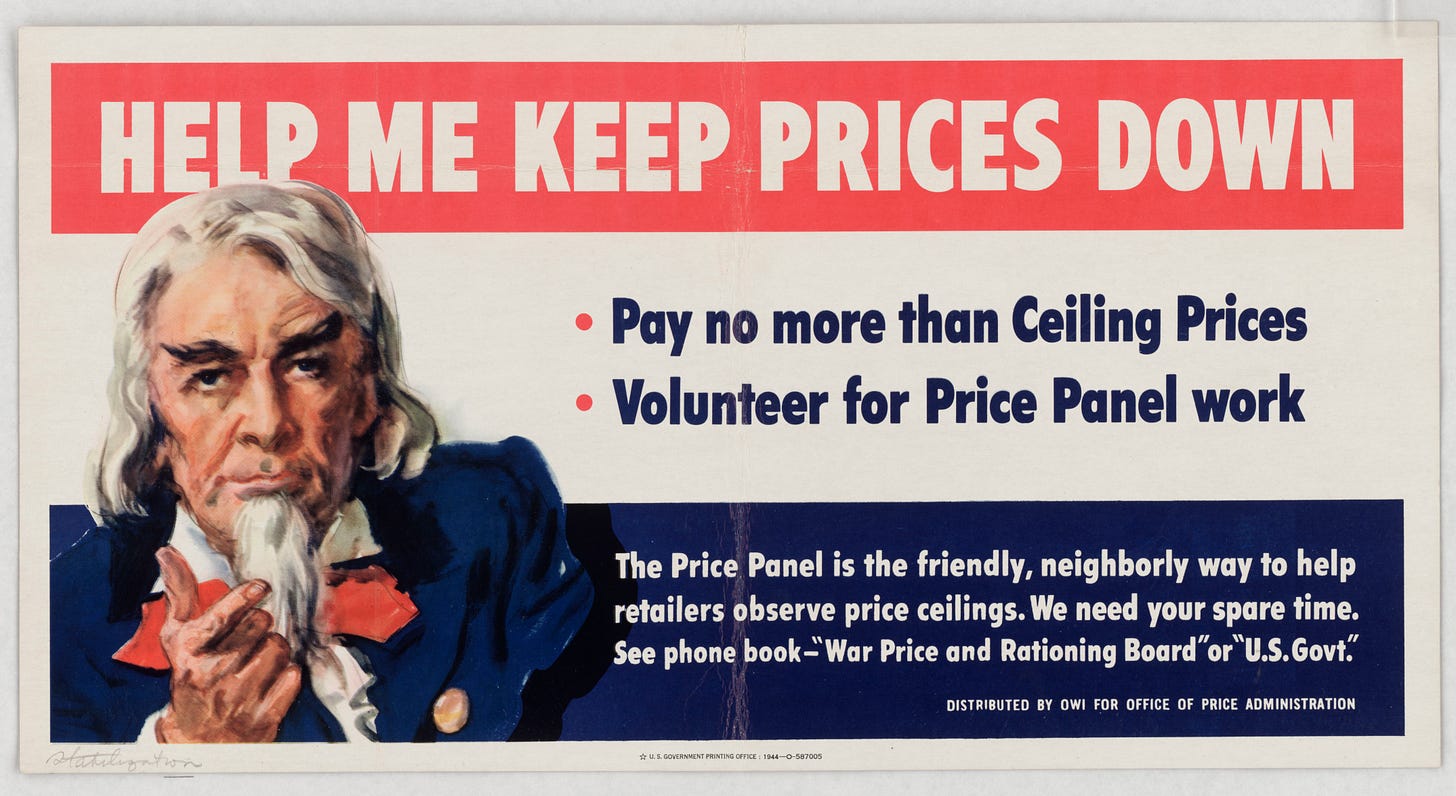WWII Rationing... and Climate Change
Can wartime-style rationing really help with climate change?

An academic paper published by Nathan Wood, Rob Lawlor, and Josie Freear in the journal Ethics, Policy, and Environment from the University of Leeds, England made headlines recently suggesting that WWII-style rationing might actually benefit our planet’s future via climate change. I hunted down the original paper which you can read and download for free (as of the posting of this article) in its entirety here!
Of course, when you say “WWII rationing” it immediately gets my attention. Back when the pandemic started I had vague thoughts of, “This would be an interesting time for a program of rationing. There’s no way anyone would go for it though.” But we did see a type of rationing in small, local ways with restrictions on purchase quantities. And then each year we saw different shortages cycle through with the biggest last year being baby formula. We still continue to see these restrictions as we work our way through the egg shortage post Avian flu cullings of chickens.
Rationing, however, is on a different level than economically or agriculturally forced restrictions. Rationing is usually a government-run program designed to make scarce commodities evenly distributed across a population for a specific duration of time. It’s not really meant to be long-term. In WWII’s case, price controls (like price ceilings) were also a huge part of the program which kept prices affordable for most people.

American rationing started in May 1942 and ended in 1947. Along the way all sorts of food, clothing, fuel, transportation, and other goods and commodities were rationed by the government to ensure there was enough supply for the armed forces, the civilian public, our lend lease promises, and helping our allies. Once there was enough to go around, rationing was lifted. No one actually wanted to keep it that way.
The British rationing system lasted from January 1940 until 1954. Churchill wanted it to last longer because of how much healthier the British people were as a result of it. But forced health (aka more vegetables) when sugar and fats and meats were actually available again? The British public said, “No, thank you!” So rationing ended. Sugar was dosing tea and butter was scraping toast again.
Enter: Modern Rationing
Keep reading with a 7-day free trial
Subscribe to Victory Kitchen Podcast Substack to keep reading this post and get 7 days of free access to the full post archives.




